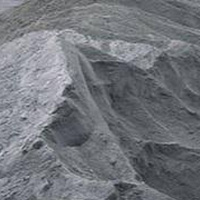You have no items in your shopping cart.
Post Requirement
Sand is nothing but quartz whereas clay is composed of many other chemically active minerals like illite, kiolinite, etc. If the size of sand is in between 4.75 mm (about 5 mm) and 0.150 mm, then it is known as a fine aggregate.
Sand is used for making concrete, mortars, and plasters and also for filling under floor, basements.
To avoid transport expenses as it plays a major part of the cost of sand, as far as possible local sand is preferred to maintain the economy in construction.
Sand is used for the different items of the construction depending on its fineness. Due to an increase in construction projects, natural sand which is usually available from local river beds or pits is becoming more difficult to get and in cost also.
According to recent research, the crushed rock and fly ash have taken the place of sand in constructions.
Sources of Sand
Sand is classified into various types according to the source of supply such as:
River sand
This sand is obtained from large rivers. It is usually fine in size. Proper care should be taken while taking the sand from rivers so that there is no clay mixed with the sand.

Pit sand
This is obtained from old stream beds, where it is sharp and generally coarse.
Stream sand
This type of sand is obtained from small streams near hills which have drained out in summer. It is usually coarse in size.
Crushed stone sand
This is obtained from the screenings left from crushed stone, which generally contains a high percentage of dust and clay. Special crushers are used for making fine aggregate from rocks because of the difficulty in getting natural sand.

Sea sand
This sand is obtained from beaches. It is usually good for most of the works if they are free from detrimental salts except reinforced concrete works. These types of sands are avoided to use in many constructions, if necessary, washed in fresh water and used.
Impurities in sand
The main impurities present in the sand are clay, silt, salts, mica and organic matter. Sand is sometimes specified that the sum of all impurities should not exceed 5 per cent and should be free from shells, wood particles, etc.
Usually, 8 per cent silt and 2 to 3 per cent of mica are allowed in the sand for mortar and concrete, exceed in percentage can reduce the strength of mortar and concrete.
Sand for concrete work
Depending on the percentage of the various sizes of sand present in a sample, sand for making concrete is grouped into five zones - Very coarse, Coarse, Fine, Very fine and Very very fine.
Most of the particles present in the sand may be of 4.75 mm or 5 mm. The main criterion for division into coarse and fine can be 0.6 mm in size. It becomes coarse sand if the major part is above 0.6 mm in size and fine sand if the major part is below 0.6 mm. Particles that cannot be seen by a naked eye is silt.
In soil mechanicals by examining the particle sizes, sand is further classified into:
Coarse sand: 4.5 mm to 2.0 mm
Medium sand: 2.0 mm to 0.425 mm
Fine sand: 0.425 mm to 0.075 mm
Very fine and Very very fine sands are not recommended in structural concrete even though they provide good strength but shows difficulties in surface finishing of concrete.
Fine sand provides more cohesion than coarse sand as it requires less quantity compared to other sands in concrete.
While making concrete, coarse aggregates from rocks will need more sand than fine aggregates, based on that the concrete mix can be designed to fit the available sand and coarse aggregates.
Check Out: Coarse Aggregates in Construction - Characteristics and Uses
Vani Paspula














Haris Parikh
posted on Dec 17, 2020 6:50:10 PM